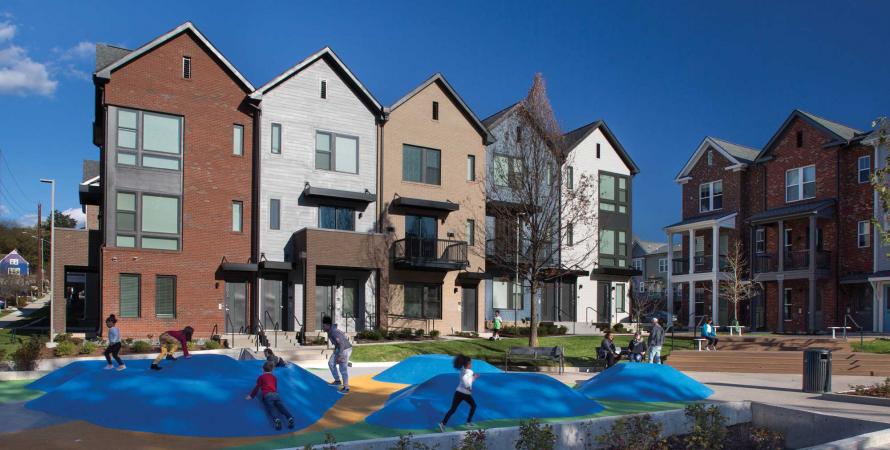-

Enhancing city life while preparing for climate change
Hammetts Wharf in Newport, Rhode Island, is an urban asset that protects and connects the city at the water’s edge. Union Studio Architecture & Community Design won a 2021 CNU Charter Award in the Block, Street, and Building category.This 24,000-square-foot mixed-use building shows how to respect and enhance a 19 th Century city while preparing for the impacts of climate change in the 21 st Century. Hammetts Wharf took a hole in the urban fabric—a parking lot on Newport’s waterfront—and created an urban asset that connects the...Read more -

Elegantly defining the street and public realm
Bonéval in Washington, DC, perfectly fits the historic neighborhood with lovely and durable details. Torti Gallas + Partners won a 2021 CNU Charter Award in the Block, Street, and Building category.The elegant Bonéval, a mid-sized condominium building designed in two parts, fits perfectly into the surrounding, historic, Capitol Hill neighborhood of the District of Columbia. The 40-unit project, which includes five affordable units, replaces a monolithic 1960s building, recently used as a...Read more -

The Charter, exactly 25 years later
A quarter century ago, the Charter of the New Urbanism laid out timeless principles that are the bedrock of an influential movement.Tuesday, May 4, unremarked by anyone in any media as far as I know, a significant anniversary for urbanism passed. Exactly 25 years before, on a sunny, warm, spring day in 1996 in Charleston, South Carolina, the Charter of the New Urbanism was signed. I was in the hall when participants of CNU IV...Read more -

A new model for public housing in Music City
Kirkpatrick Park in Nashville, Tennessee, is a catalyst for mixed-income, public housing transformation, designed around a “woonerf.” Smith Gee Studio won a 2021 CNU Charter Award in the Block, Street, and Building category.The 4-acre Kirkpatrick Park sets a standard for how to build mixed-income public housing in Nashville—an example that could be emulated elsewhere in the US. The development mixes public, workforce, and market-rate housing in nearly equal measure, side-by-side in close proximity. Instead of the...Read more